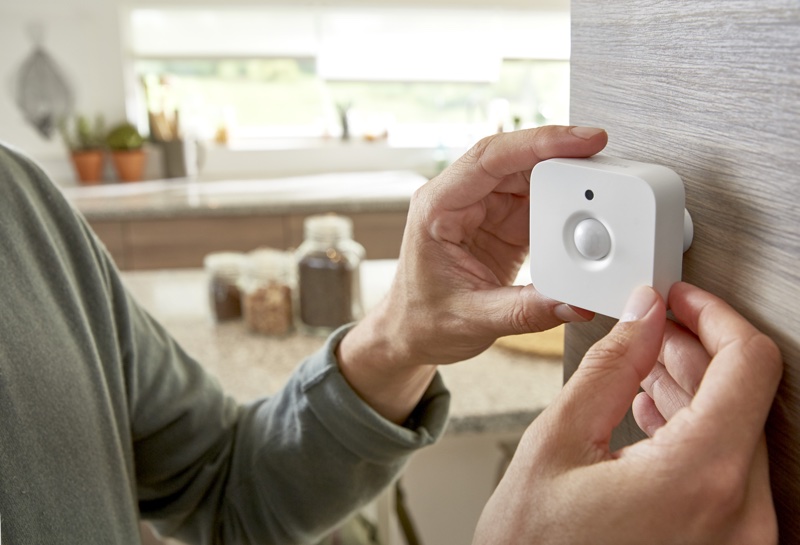The Sudden Motion Sensor (SMS) is Apple's motion-based data protection system used in their notebook computer systems. Apple introduced the system January 1, 2005 in its refreshed PowerBook line, and included it in the iBook line July 26, 2005. Since that time, Apple has included the system in all of their non-SSD portable systems (since October 2006), now the MacBook Pro and MacBook Air.
The Leap Motion controller lets you interact directly with digital content on Windows PCs using your bare hands (Legacy support for Mac OS X is also available ) quick setup download the Leap Motion software plug the device into your USB port and you're ready to go Download free apps for desktop and virtual reality on the Leap Motion gallery If you're a developer use the Leap Motion platform. Sensitivity - Controls the motion detection sensitivity. Idle Record - Controls how long the app continues recording after the motion stops. Visualize Motion - Visualizes motion detected by the app. State of the Art, ADA Compliant, Heavy Duty Lavatory Automatic, Electronic, Motion Sensor Faucet, Solid Brass, Generally Suitable for Heavy Traffic Commercial and Residential Applications. 100% Q.C (every faucet undergoes 9 point inspection before leaving the factory). Hats off to MAC Faucets for great product at a great price.
With a triaxial accelerometer, the shock detector detects sudden acceleration, such as when the computer is dropped, and prepares the relatively fragile hard disk drive mechanism for impact. The system disengages the disk drive heads from the hard disk platters, preventing data loss and drive damage from a disk head crash. When the computer is stable, the drive operates normally again. A clicking noise can be heard when the sudden motion sensor activates.
Broadly speaking, there have been two types of Sudden Motion Sensor. The sensor used in the G4-based laptops resolved shifts of 1/52 g (e.g. the dynamic range was close to 6-bit), while the sensor used in the current Intel-based laptops have an 8-bit resolution (250 scale divisions). In at least one model of Intel-based laptop, the MacBook Pro 15', Apple uses the Kionix KXM52-1050 three-axis accelerometer chip, with dynamic range of +/- 2g and bandwidth up to 1.5 kHz.
Aftermarket hardware problems[edit]

Among the MacBook and MacBook Pro community there have been several owners[who?] who installed aftermarket hard drives already equipped with anti-shock features who reported[where?] experiencing kernel panic errors whenever their unit was physically moved. This is believed[by whom?] to be due to a conflict between SMS and the new drive's anti-shock function. The Western Digital Scorpio series of notebook hard drives have been the most frequently reported[where?] as being susceptible to this problem. In practically all cases, disabling SMS alleviated this problem without any negative performance impact.[according to whom?]
See also[edit]
External links[edit]
- AMSTracker by Amit Singh Command line utility for reading data from the Sudden Motion Sensor
The Sudden Motion Sensor is designed to protect your Macs hard drive in the event of a computer being dropped or an unusually strong vibration. Essentially what it does is park the hard drive head when movement is detected, which prevents it from potentially scooting across the disk surface and scratching or otherwise damaging the drive or drive head.
Generally speaking, you will want to always have the SMS sensor enabled, but Apple mentions that certain environments are susceptible to unnecessary drive head parking due to the SMS. Basically the SMS detects a strong vibration and then the hard drive parks which can cause video and music playback issues, amongst other annoyances. This is particularly true with concert halls with strong acoustics, recording studios, dance and night clubs, and even walking workstations (the ones with a treadmill under a standing desk). Also, some owners of SSD drives may want to disable the feature.
Disable Sudden Motion Sensor on a Mac Laptop
This works to disable the Sudden Motion Sensor on the MacBook Pro, MacBook Air, MacBook, PowerBook, and iBook running Mac OS X 10.6 and lower:
Launch Terminal
Type the following at the command line: sudo pmset -a sms 0
Hit return and enter your password
The SMS sensor is now disabled, it’s just as easy to reenable again by changing the zero to a one when you need the protection back:

Motion Sensor For Camping
Enable the Sudden Motion Sensor on a Mac Laptop

This works on the same hardware as disabling the feature, and it’s basically the same commands:
Outdoor Motion Sensors
Launch Terminal
Type the following at the command line: sudo pmset -a sms 1
Hit return and enter your admin password
You’ll notice the commands are identical except that the -a sms flag now has 1 attached to it rather than 0 (standard computing protocol of 1 for on, 0 for off).
Motion Sensor Machine Gun
Checking the status of the Sudden Motion Sensor
If you’re not sure whether the motion sensor is enabled or not, you can check quickly with the command line:
Launch Terminal
At the command line, type: sudo pmset -g
Hit return, enter your password, and look for “sms” in the list. Seeing a 1 next to sms indicates that the motion sensor is enabled, seeing a 0 next to sms indicates the motion sensor is disabled
:max_bytes(150000):strip_icc()/mac-sms-2346b4b97ad34c8b98383f019fa0a7c1.jpg)
Motion Sensor For Crows
Most users will never need to adjust the sudden motion sensor, but if you do find yourself in a situation where there are continuous vibrations or movements and your Mac is behaving strangely, this may be the culprit.
